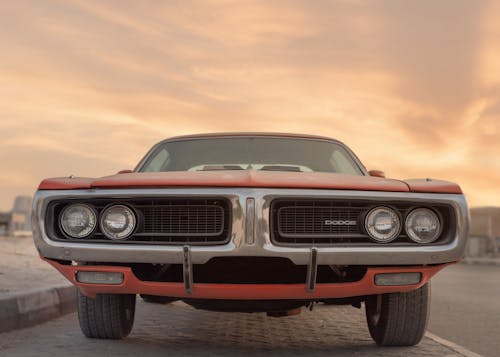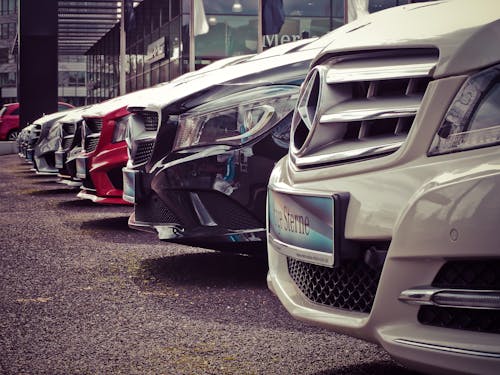The journey of car design has been nothing short of remarkable. Over the years, the automobile industry has transformed dramatically, from the classic, simple vehicles of the early 20th century to today’s sophisticated, high-tech machines. Each era has brought its own innovations and aesthetic shifts, reflecting technological advancements, changing consumer preferences, and a growing awareness of environmental concerns. In this article, we’ll take a closer look at how car design has evolved, tracing the path from the early models to the sleek, cutting-edge vehicles of the present day.
The Early Years: Simplicity and Functionality
The first cars were rudimentary machines designed primarily for functionality. The earliest models, such as the Ford Model T, released in 1908, were built with an emphasis on practicality and reliability. Car design during this time was utilitarian, focusing on getting people from point A to point B. There was little consideration for aesthetics or luxury—cars were meant to be simple, reliable, and affordable. The Model T, for example, was known for its ability to handle rough roads, making it accessible to a broader audience. The design was basic, with boxy shapes, large wheels, and minimal interior features. Despite this simplicity, it was a groundbreaking vehicle, laying the foundation for modern automobile production.

As the decades went on, car design began to evolve. By the 1920s and 1930s, automakers began introducing more elegant features and body styles. This period marked the emergence of the first truly luxury vehicles, with brands like Cadillac and Packard offering sleek, stylish designs. The automobile began to shift from a purely functional object into a status symbol for the wealthy. In addition to style, these cars featured advanced engineering, with smoother lines and more comfortable interiors. The introduction of chrome details, polished finishes, and finer upholstery set the stage for future design trends.
Post-War Boom: Innovation and Style
The post-World War II era saw a massive boom in automobile production and sales, and with it came more dynamic and innovative car designs. Automakers had more resources to experiment with new materials and technologies, leading to sleeker, more aerodynamic shapes. The 1950s and 1960s brought a wave of design innovation, with cars taking on smooth, rounded shapes that emphasized speed and elegance. Iconic models like the Chevrolet Corvette and the Ford Mustang were introduced, both of which featured muscular, athletic designs that captured the spirit of the era. The “tailfin” design, popularized by Cadillac, was a notable trend during this time, giving cars a futuristic look.
At the same time, car interiors also saw significant improvements. Seats became more comfortable, and the introduction of features like power windows, air conditioning, and advanced sound systems made driving more enjoyable. The interior design was as much about comfort and convenience as it was about showcasing a car’s style and luxury. This period also saw the rise of the muscle car, with powerful engines and aggressive designs that appealed to a youthful, rebellious demographic.
The 1980s to 2000s: Technology Meets Design
The 1980s and 1990s marked a turning point in car design, as technology began to play a larger role in shaping both the aesthetic and functionality of vehicles. The introduction of more efficient manufacturing processes, such as the use of computer-aided design (CAD), allowed for more precise and intricate designs. Cars from this era were often characterized by their boxier, more angular shapes, as automakers began prioritizing aerodynamics and fuel efficiency in response to rising fuel costs.
During this period, cars became increasingly sophisticated, with more electronic features and safety innovations. The introduction of airbags, anti-lock brakes, and advanced suspension systems made vehicles safer and more reliable. Automakers also started to integrate more tech-focused features, such as onboard computers, digital dashboards, and early navigation systems. The shift towards smaller, more fuel-efficient cars was evident in models like the Toyota Corolla and Honda Civic, which became popular for their practicality and affordability. However, luxury vehicles during this time, such as the Mercedes-Benz S-Class and the BMW 7 Series, also showcased the latest in technology and design, with high-end interiors, advanced sound systems, and driver assistance features.
Modern Day: Sustainable and Futuristic Design
Today, car design is focused on sustainability, efficiency, and advanced technology. With the rise of electric vehicles (EVs) and hybrid cars, automakers are embracing new materials and design philosophies to reduce environmental impact and improve energy efficiency. The sleek, aerodynamic shapes of modern cars reflect an emphasis on reducing drag and increasing fuel economy. At the same time, EVs like the Tesla Model S, Nissan Leaf, and the Rivian R1T showcase cutting-edge technology, from autonomous driving capabilities to intuitive infotainment systems.
The interiors of modern cars have also undergone a transformation. Where once vehicles were equipped with traditional buttons and switches, today’s cars often feature minimalist, high-tech dashboards with touchscreen interfaces and digital displays. Many new vehicles are equipped with smart technology, such as voice-activated controls, wireless charging, and integrated smart assistants that enhance the driving experience. The emphasis is on creating an intuitive, connected experience for the driver and passengers.
Sustainability has also become a major consideration in car design. Many automakers are now using recycled materials, eco-friendly fabrics, and sustainably sourced components in their vehicles. Car manufacturers are increasingly prioritizing green manufacturing processes and making strides towards zero-emission production. In addition, the shift towards electric and hybrid vehicles has accelerated, as consumers and manufacturers look to reduce the automotive industry’s carbon footprint.

The Future: Autonomous and Connected Cars
Looking ahead, car design is poised for even more dramatic changes as the industry moves towards fully autonomous and connected vehicles. Self-driving technology promises to reshape the way we think about cars, with vehicles that no longer require human intervention to operate. This will likely result in new designs that prioritize comfort and convenience over traditional driving features, as passengers may spend more time in their vehicles. In fact, the interior of future cars may be more like a living room or office space, with modular seating, interactive screens, and other innovations to enhance the in-car experience.
Furthermore, cars will become even more integrated with the Internet of Things (IoT), connecting to other devices and systems to provide real-time information and personalized services. Imagine a car that can recognize your preferences, adjust the temperature and music to your liking, and suggest optimal routes based on traffic conditions. Smart technology will make the driving experience safer, more efficient, and more enjoyable.
Car design is a constantly evolving field, driven by technological advancements, environmental considerations, and changing consumer demands. From the early days of simple, functional vehicles to today’s sleek, high-tech machines, the automotive industry has come a long way. The future of car design holds exciting possibilities, with autonomous driving, sustainable materials, and smart technology poised to shape the cars of tomorrow. As the industry continues to innovate, the future of automobiles looks brighter than ever, promising vehicles that are more efficient, comfortable, and connected than ever before.














